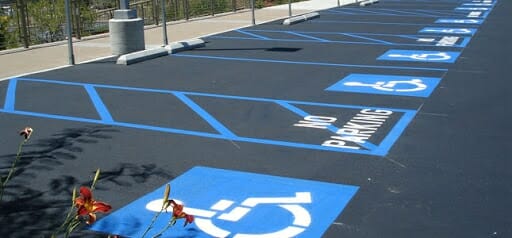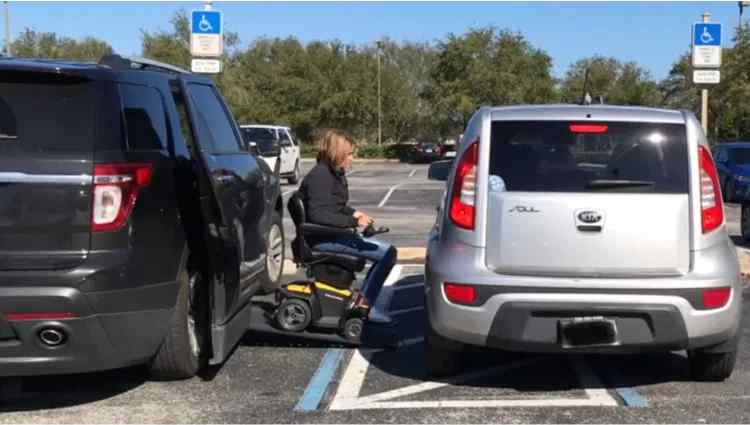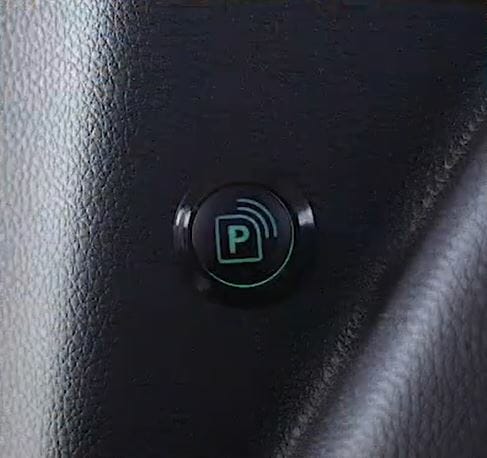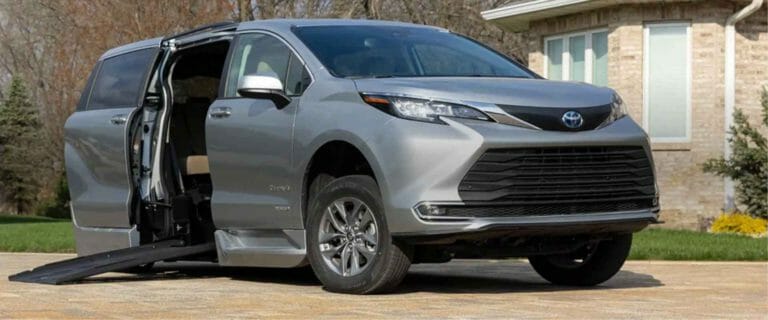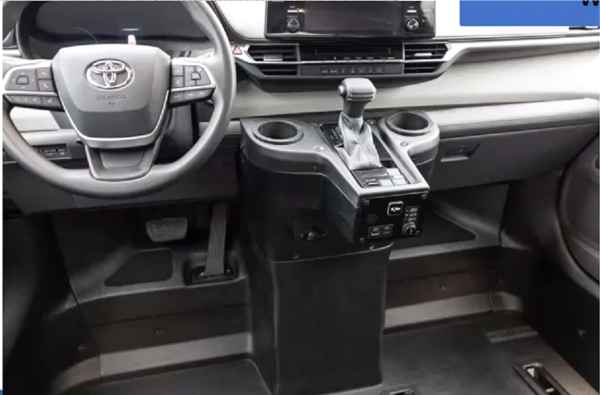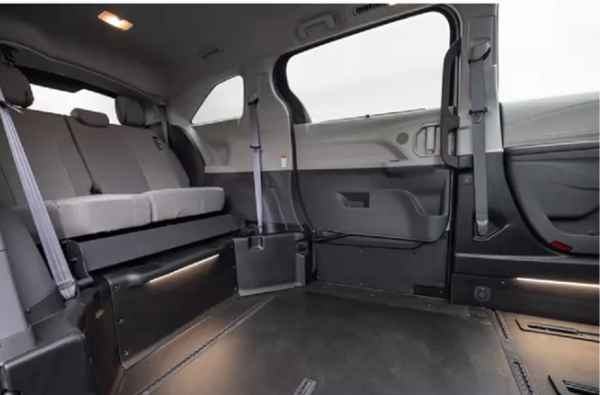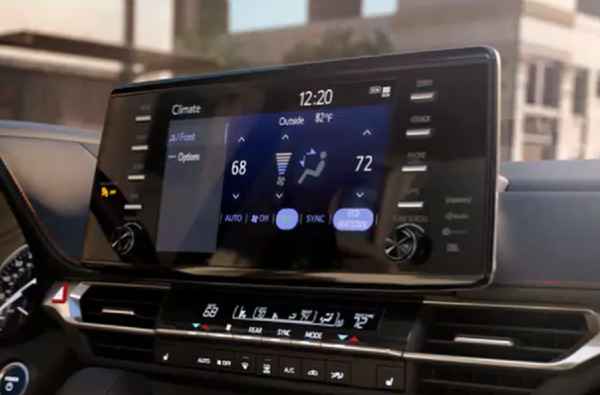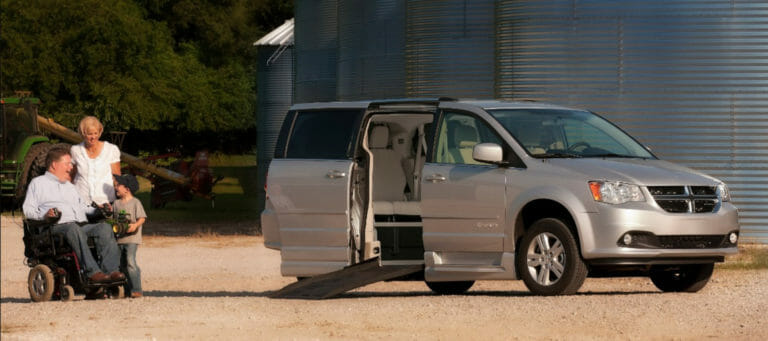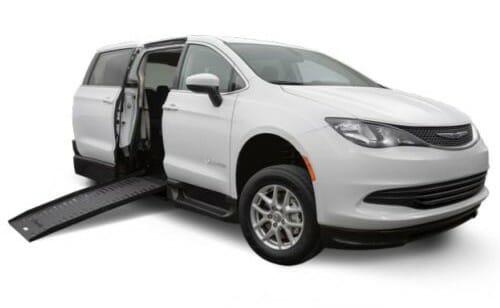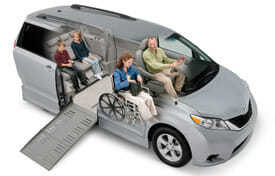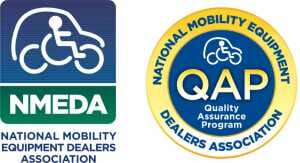Finding a Wheelchair Accessible Vehicle For Sale
Finding a wheelchair-accessible vehicle for sale can be daunting if you are unsure where to start looking or know what to ask. Fortunately, it doesn’t have to be as tricky as it seems. We’ve compiled some information and tips below that will help make the process much easier.
What is a Wheelchair-Accessible Vehicle?
They go by many names, wheelchair van, handicap van, mobility van, adaptive van, handicap SUV, etcetera. However, for general identification purposes, an accessible vehicle is specifically designed to safely accommodate one or more individuals in a wheelchair for transportation.
To achieve this, a manufacturer utilizes a traditional vehicle chassis and generally removes the flooring from just behind the firewall to the rear seat. Most of the time, a minivan or SUV chassis is used. These vehicle types provide the best conversion result and the largest interior space.
After removing the floor, the manufacturer will replace the removed section of the vehicle with a new engineered flooring system, 10 to 14-inches lower. The lower floor is necessary to adjust for a wheelchair user’s seated height. The lowering provides a more natural line of sight for the user.
In addition to lowering the floor height, another significant component is the integrated wheelchair ramp system. The ramp system is either manually or power-operated and deploys either in a fold-out or in-floor (underfloor) design. Wheelchair-accessible vehicles are available in either a rear or side-entry configuration. Specific needs dictate which configuration is ideal for a particular user.
How Much Does a Handicap Van Cost?
Handicap-accessible vehicles are available in many types and configurations. Plus, just like a traditional vehicle, they are available as both new and used. For general purposes, a new wheelchair van will cost between $52,000 to $82,000. That includes both the cost of the chassis and the conversion process. A used wheelchair van can cost $13,000 to $65,000 based on its year, condition, conversion type, and mileage. The factors that dictate price are numerous.
Where to Buy a Wheelchair Van or Handicap SUV?
Your best opportunity to find a new or used wheelchair-accessible van or SUV is your local mobility dealer. In your search, you will want to make sure that your local mobility dealer is a member of NMEDA (National Mobility Dealers Association). They are held to strict guidelines in selling and servicing mobility vehicles by being a member. Your local car dealer is not a member or a good source. If you are unaware of your local mobility dealer, you can visit NMEDA’s website to use their dealer locator.
Your local mobility dealer is also your best option for used wheelchair-accessible vehicles. A mobility dealer knows the differences in the types of conversions. They will be your best resource to which conversion type and configuration will work best for your needs, and which manufacturers have the most reliable products. They also know what to look for when reconditioning an accessible vehicle for sale. You will have the best chance of locating a more reliable, well-maintained wheelchair van or SUV from your local dealer. Plus, they will be here for you if you need repair or service. Check our current list of available new and used wheelchair-accessible vehicles for sale.
However, in addition to your local mobility dealer, you may find several other resources. Most of these can be found by searching for a wheelchair van for sale, handicap van for sale, handicap SUV for sale, etcetera in your web browser. Searching by those industry phrases will return a list of resources and vehicles for sale. Some may be for sale by the owner but beware of what you are buying and how it will work for your specific needs. We have often heard that customers who have purchased a vehicle from an individual have had significant issues or find the vehicle does not precisely address their needs.
Can I Finance a Wheelchair Van or Handicap SUV?
Yes, you can finance a wheelchair van or SUV. There are numerous options available if you know where to find them. Your local bank generally will have a hard time if they are not familiar with the vehicle type. However, most mobility dealers have financing available, most only one or two sources. At Superior Van & Mobility, we have six wheelchair van financing sources to provide our customers access to competitive rates.
Financing term options are generally available on wheelchair vans and handicap SUVs from 1 to 10-years. These longer terms allow buyers to spread the chassis cost and additional conversion cost across a more extended period. Rates are competitive to traditional lending sources.
Is There Help Available Paying for a Wheelchair-Accessible Vehicle?
If you need assistance in purchasing an accessible vehicle, contact one of our certified mobility consultants today or visit our links & resource page on our website. We have compiled a list of helpful links and resources, many of which provide grants and payment assistance for those unable to afford a handicap vehicle. You will find an extensive list of national and local organizations with programs available.
If you would like to receive a FREE consultation with one of our mobility consultants, please give us a call 1-877-545-1888, send us a chat below, or send us your question using the button above.

Richard W. Maxwell, MBA
Richard Maxwell, is a seasoned automotive marketing executive with over two decades of experience. Starting in 1999 with his advertising agency, Maxx Design & Marketing, he has consistently delivered innovative marketing solutions. After earning his MBA, Richard shifted focus to adaptive technology, serving as Marketing Manager for Superior Van & Mobility. Today, he leverages his expertise to promote and educate others about adaptive equipment in transportation and drive change in accessible mobility.


